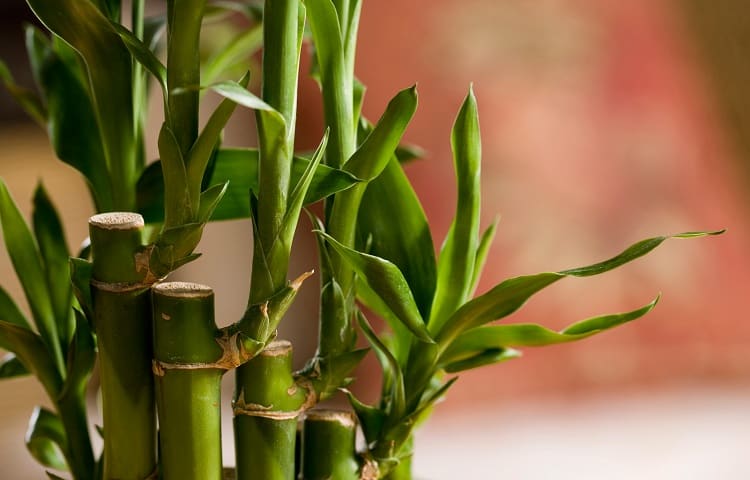4 of the Best Bathroom Plants
Our recommendations for the best bathroom plants are Spiral Lucky Bamboo and Hirt’s Peace Lily Plant. We focused on smaller houseplants that tolerate low light. We figured space would be at a premium. We also wanted a hardy plant that could handle excess moisture. If you want a few more picks, read our more thorough list below.
Our Top Picks for the Best Bathroom Plants
[wptb id="8331" not found ]What You Need to Know about Growing Plants Indoors
If you can meet a plant’s basic needs for light, moisture, and fertilizer, you are well on your way to success. Sounds simple? It is if you begin with a good match with your household’s conditions. Fortunately, many plants can thrive and even flourish in the conditions of the typical bathroom. There’s no reason why you can’t have indoor plants in every room of your home.
Low Light Exposure
Light exposure is a critical factor, especially in the closed space of a bathroom. Even in sunny locations, like a windowsill, the chances are that there are low light conditions rather than direct light. You should consider both the direction that the windows face and how much light the bathroom receives. Your best success will come from plants that not only tolerate these conditions but prefer them.
As with all indoor gardening, plants that fare well will show vibrant growth. Their leaves and stems are normal in size. A plant that isn’t receiving enough light will have smaller, less colorful leaves. These plants will struggle to get enough light by growing spindly to try to find it. Rather than the robust form of a thriving plant, one that isn’t happy with its condition will appear sickly and thin.
Moisture Needs
Meeting your plant’s need for moisture is a balancing act. Both underwatering and overwatering can harm plants. Underwatering can cause a plant to stop growing to conserve resources. Overwatering can suffocate roots desperate for oxygen. The pooling of water can increase the likelihood of root rot. The warm, humid environment of a bathroom adds to the risk.
The most effective way to meet this balance is a container that has some drainage. Whether it’s a hole or a false bottom to let water drain out, it does the important task of preventing the conditions that are favorable to the development of mold and bacteria. You should avoid using sand as a base because water will likely pool rather than drain away.
This video from the University of Wyoming Extension discusses the need for drainage in your indoor plants with some ideas for keeping them healthy.
The soil can give you a good indication whether you should water your plant. Unless a plant requires moist soils, you can let it dry between waterings. When it feels dry to the touch, it’s time to water. Remember the relative humidity of the room will influence the plant’s need for water and the time it’ll take the soil to dry. Timing will vary with other plants in your home.
Fertilizing Your Indoor Plants
You will need to fertilize your plants occasionally. The soil mixture in its container is the plant’s only source of nutrients. Needs vary with the kind of plant, of course. Other factors come into play too. There’s the growth rate. Faster-growing plants will need fertilizing more often to keep up with new growth. Likewise, plants in sunny spots will need extra nutrition too.
Shade-tolerant plants make up for low light conditions by making optimal use of the nutrients in the soil. Initially, the soil mixture can provide the nutrition your plant needs. Down the road, you’ll need to replenish it with a fertilizer suitable for the type of plant you have. Let your plant’s growth by your guide. An actively growing plant will need more nutrients than one that is dormant.
The chances are that a plant in the bathroom won’t need fertilizing as much as a plant growing in a sunny living room. The low light and smaller size of a bathroom plant mean less fertilizer. To avoid overdoing it, you can opt for a time-release formula. After all, fertilizer is only good if given in the proper amount. Follow the labeling instructions to prevent burning your plant’s roots.
Choosing Plants for the Bathroom
When it comes time to picking your plants, think about the typical environmental conditions of your bathroom. It’s far easier to choose plants that can tolerate what is already in place. A grow light might not be practical, making low light plants a better choice. We also like to narrow our focus to low maintenance plants. The less picky they are, the less work it means for us.
Tolerance
If you think about the environment of the typical bathroom, a few things will come to mind. There is low light. It’s probably humid at times. It might be on the warmer side if you have a space heater. It’ll probably get cool at night. Sounds like a rainforest to us, call it a jungle bathroom. Tropical plants like those that would live in the understory of a rainforest offer excellent choices for bathroom plants.
Since most bathrooms are small, you probably won’t have a lot of plants in this room. You can make the most out of your choice with one that is decorative on its own. You can use plant decor to create a mood just like you would in any other room. Think of the relaxing atmosphere and interior trends of spa decor. Your choice of plants can enhance this feel for your room by bringing greenery into your room.
Our Recommendations: Spiral Lucky Bamboo and Hirt’s Peace Lily Plant
Low was the operative word for us. We narrowed our choices to low light and low maintenance. We also liked the idea of creating a spa-like environment with plants that are showy in a classy kind of way. We wanted a plant that would be happy in these conditions and able to handle a wee bit of neglect, should that ever happen.
The Spiral Lucky Bamboo fit our criteria for a potted plant that stands out as a centerpiece with low care needs. The fact that it is thought to bring good fortune to a household added to its charm. We liked the idea of a long-lived plant with a kind of Zen-like feel to it to go with our spa motif. The beautiful green stems and leaves gave it a welcoming feel we couldn’t resist.
The Hirt’s Peace Lily Plant stood out as a plant that loves low light, making it an excellent choice for a bathroom, especially if it’s an inner room of the home. We liked the idea of a plant that blooms year-round which added to its appeal. The peace lily makes it easy to know what it needs watering by its drooping leaves. Maintenance couldn’t be easier.
Adding a plant or two to your bathroom is an inexpensive way to complement the decor and create a relaxing mood. With a focus on low light plants, we found several excellent choices that will fare well in these conditions. Any of them would make a suitable choice for a plant with a big impact and low maintenance. Hanging plants, aloe vera, and ornamental orchids are also options for bathroom plants.




